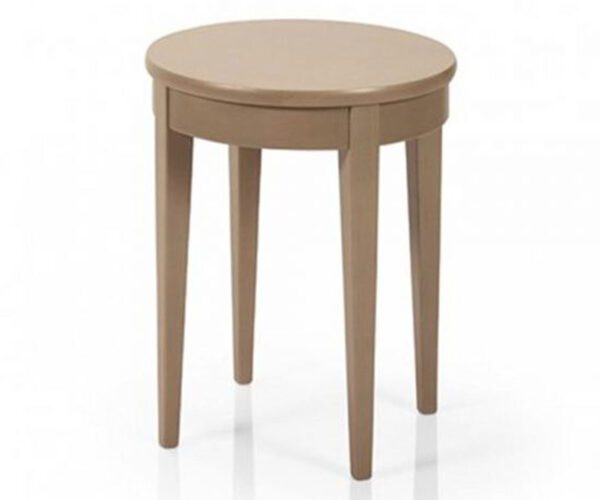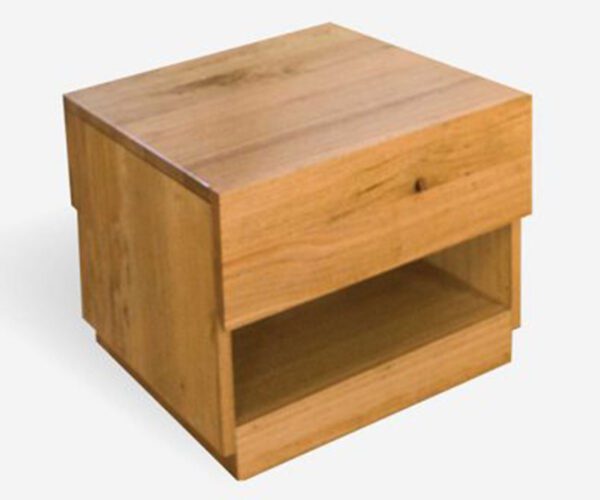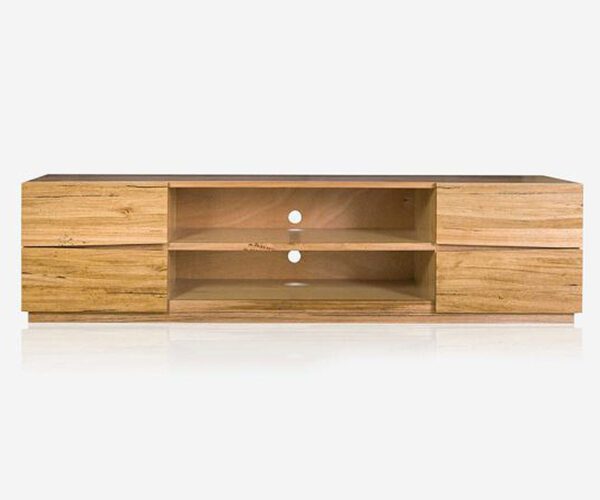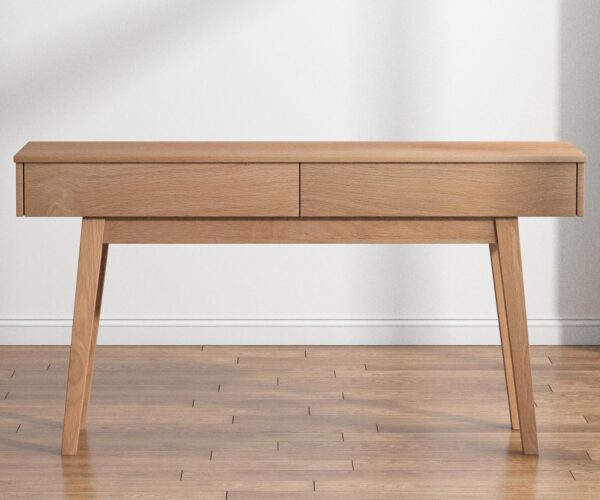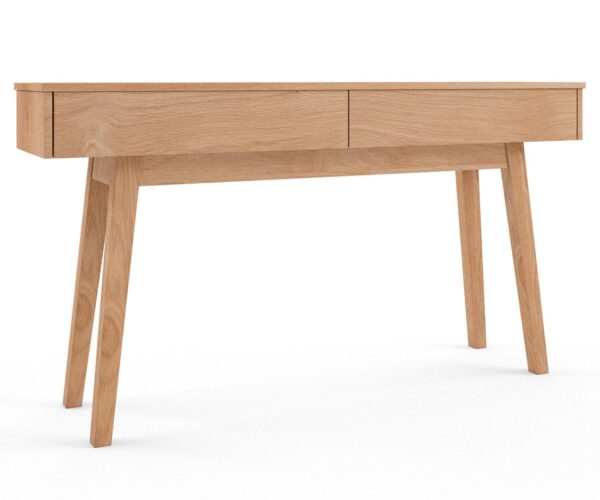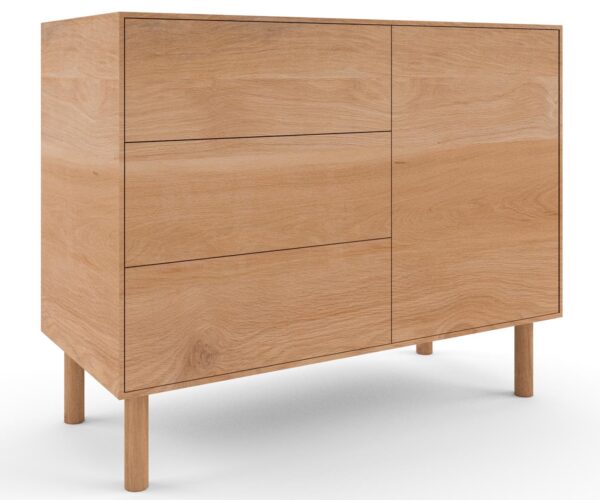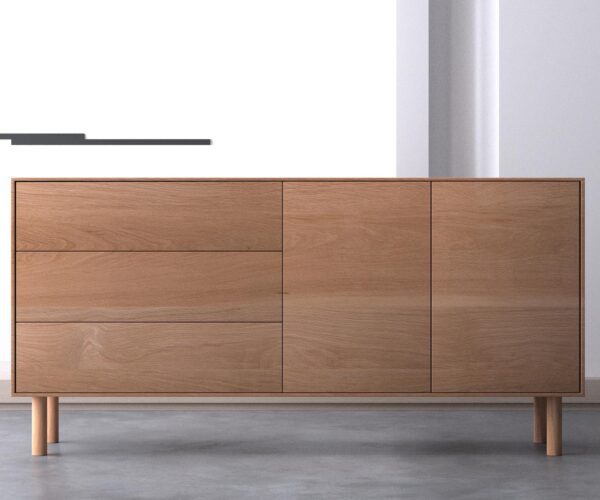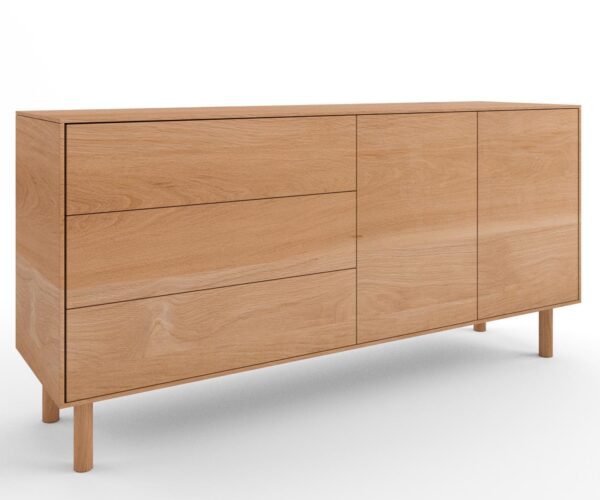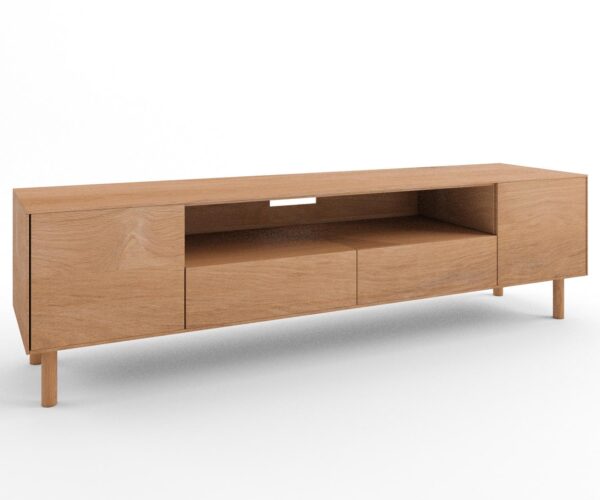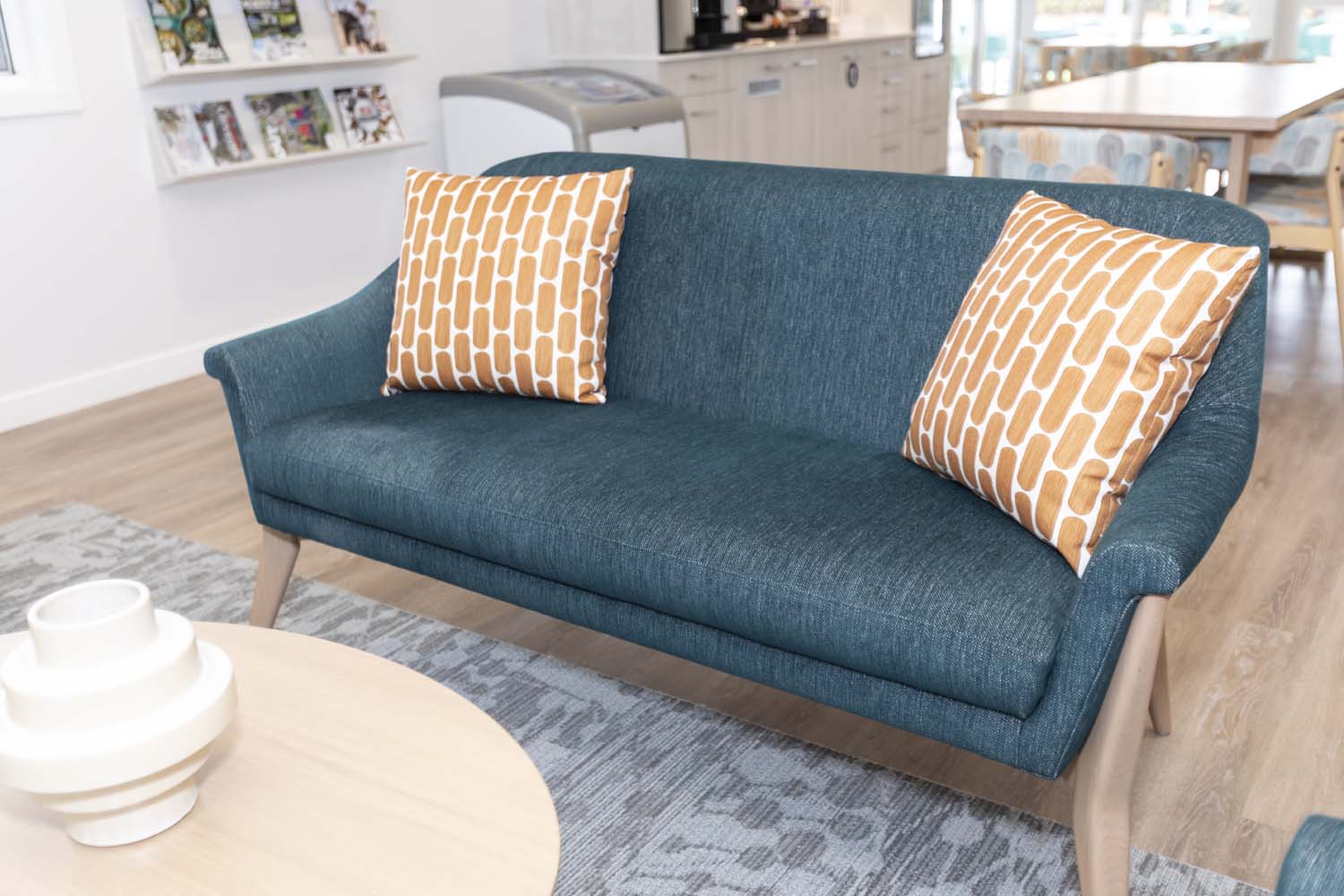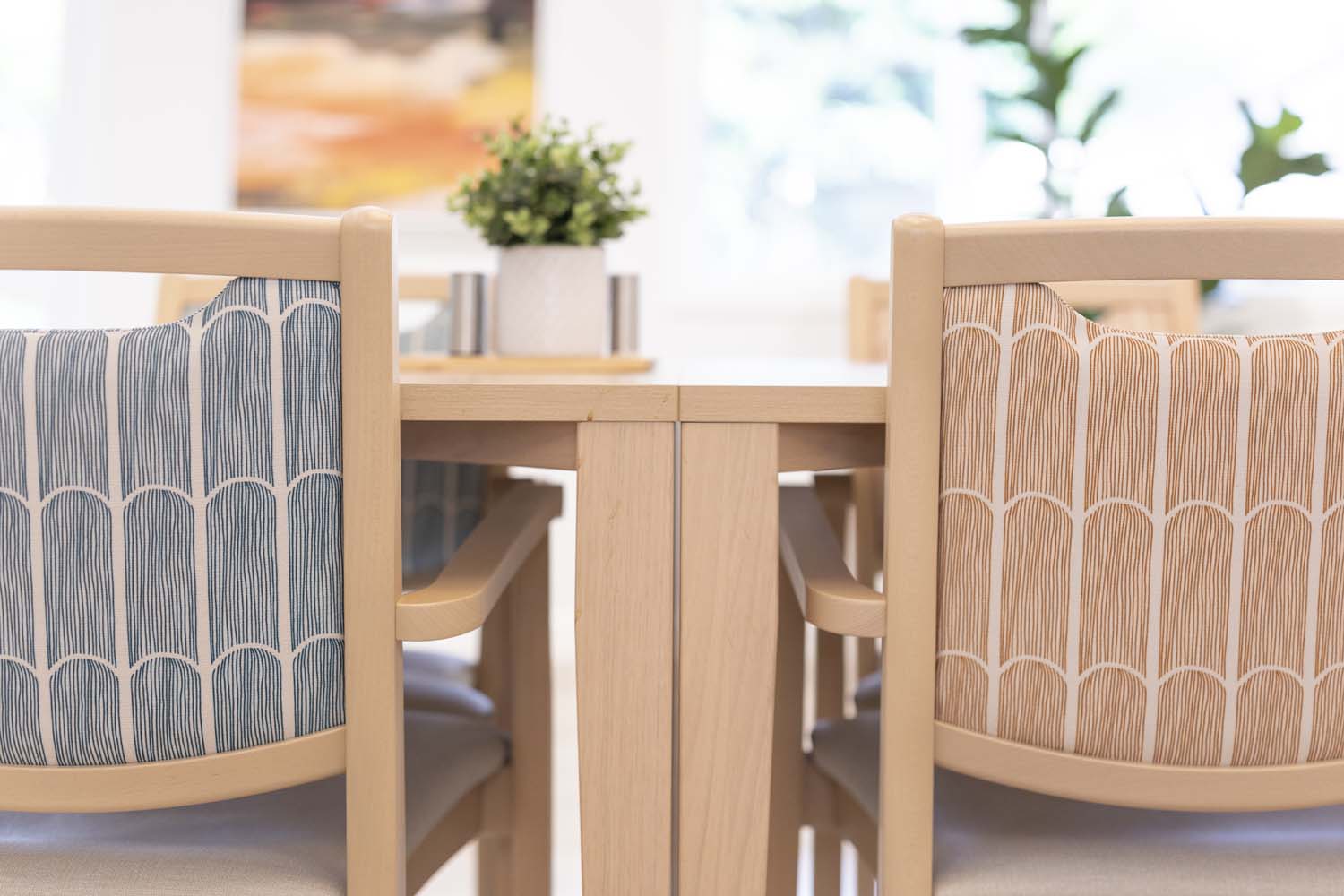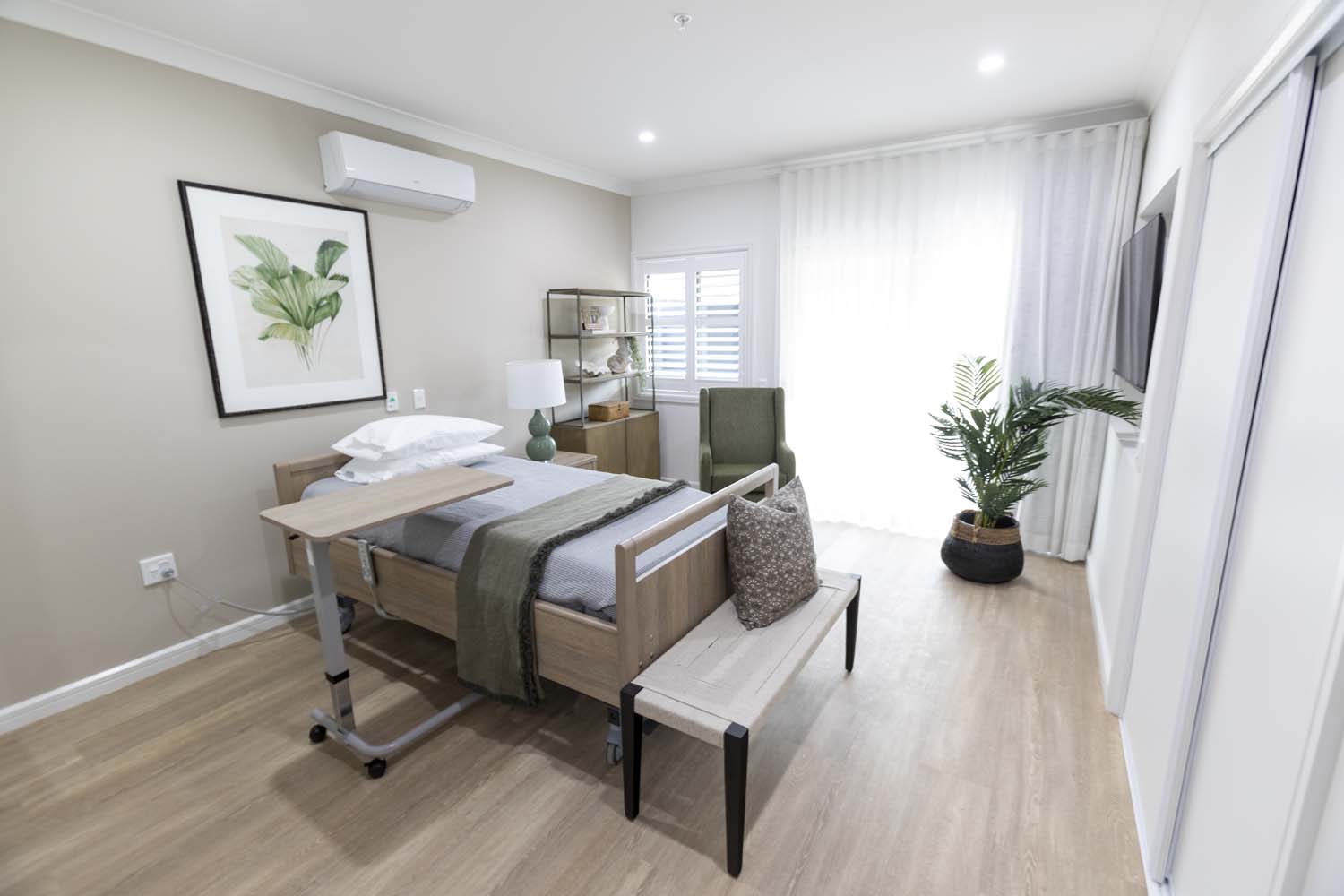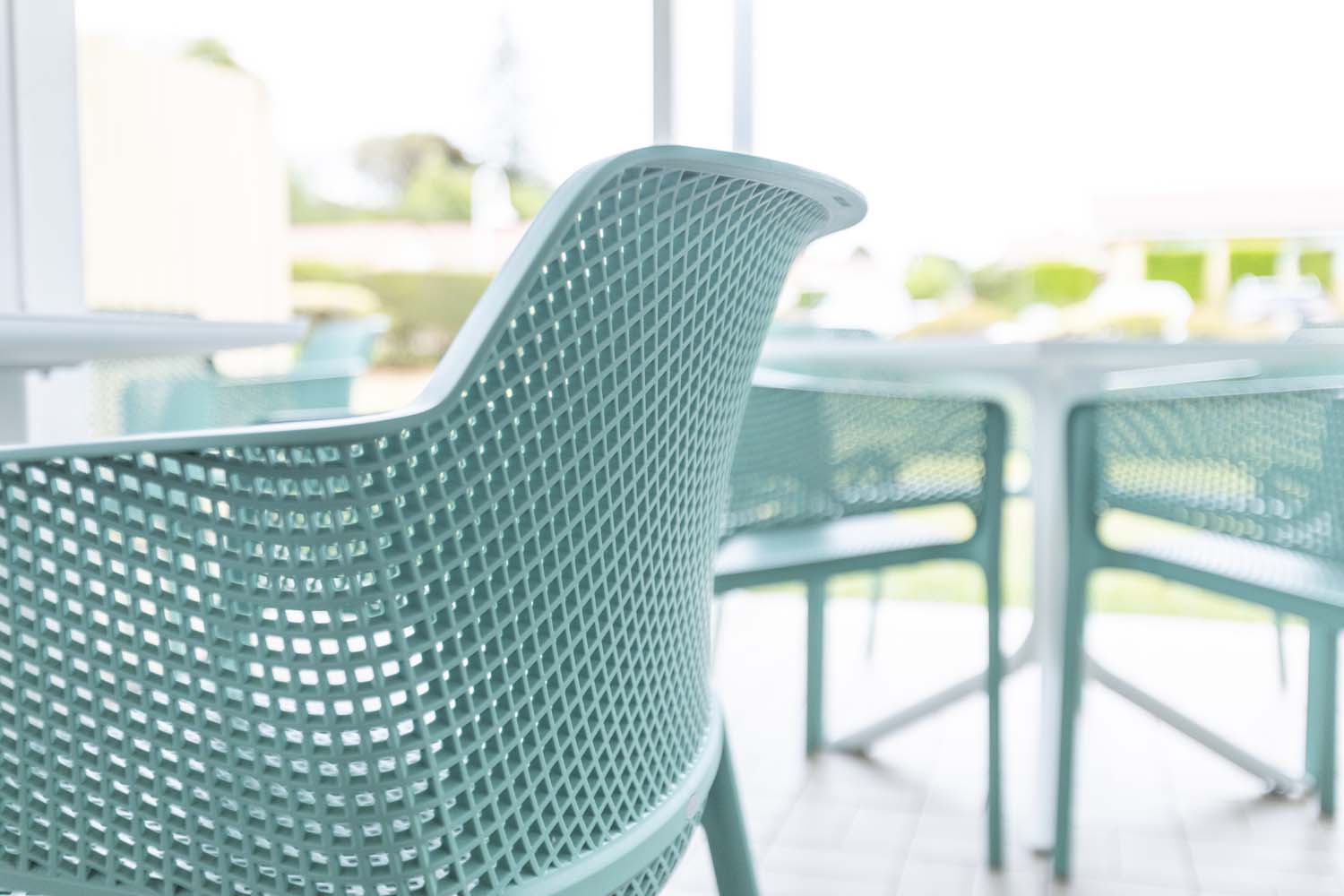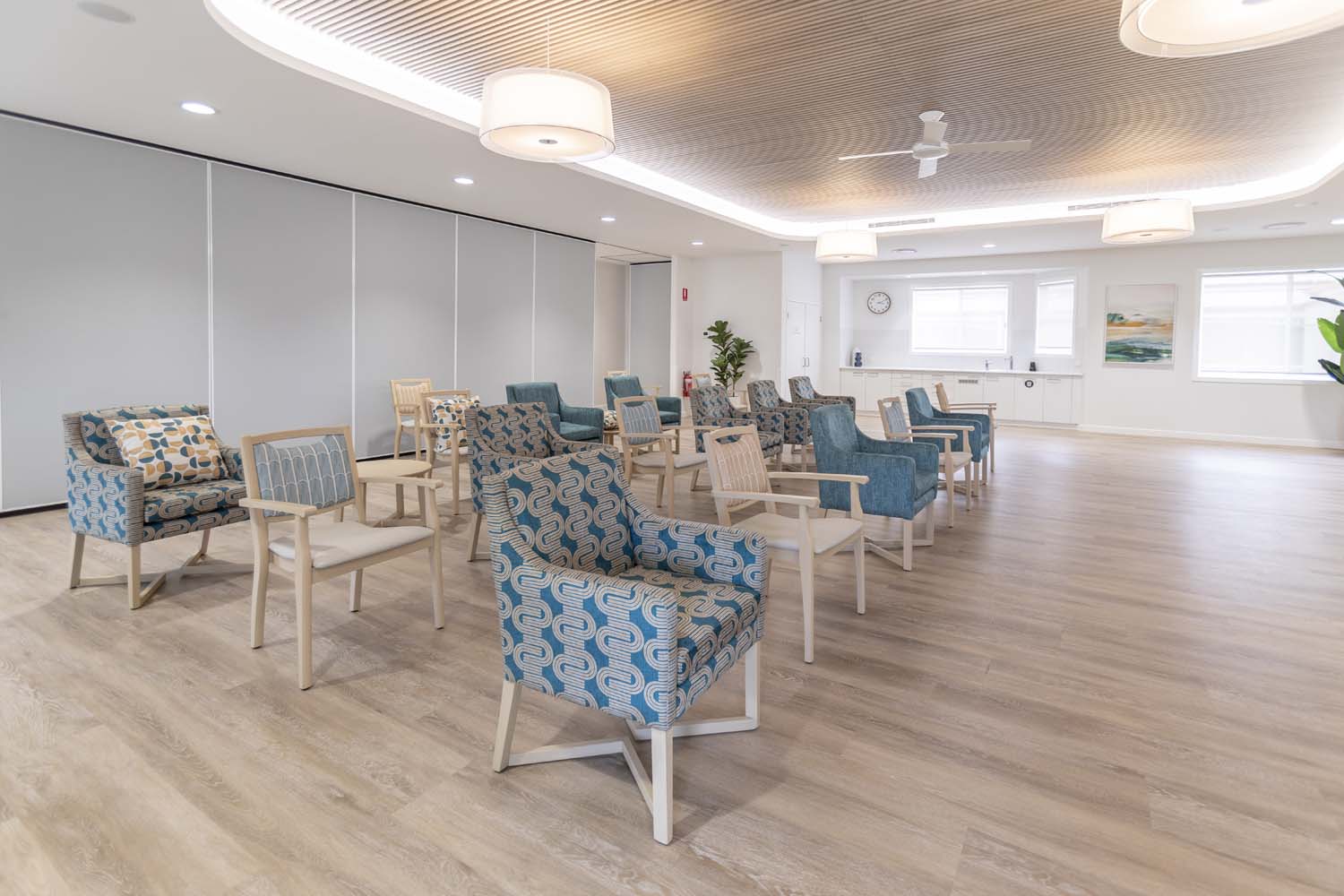Designing for Dignity in Residential Aged Care: Lessons from the Support at Home Reform
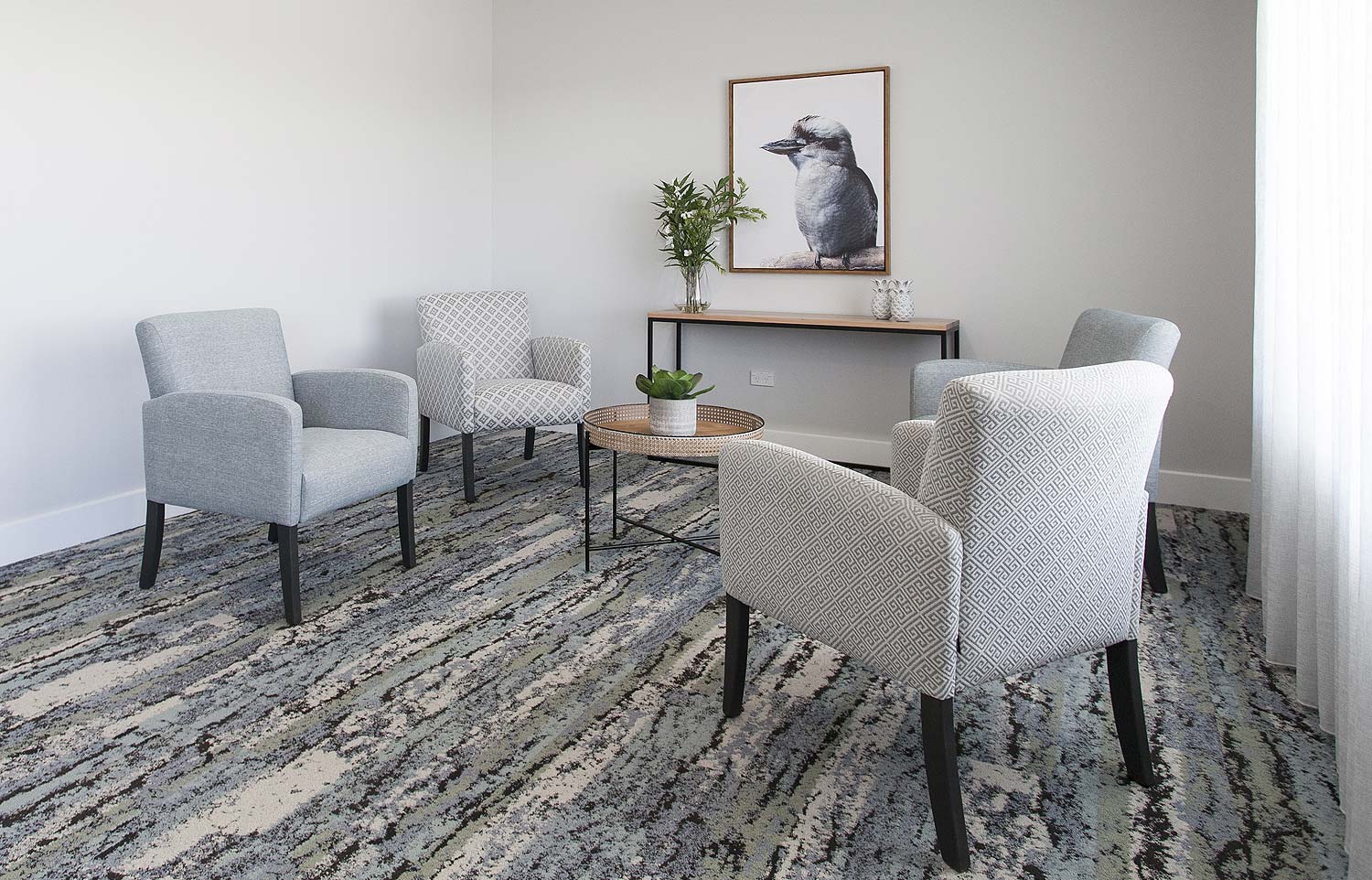
With the Support at Home program set to launch on 1 July 2025, home care providers are rethinking how they deliver services — and the ripple effects are reaching residential aged care. While residential settings aren’t directly impacted (yet), the shift in consumer expectations is clear: people want care environments that feel less clinical and more like home.
So, what can residential aged care providers learn from this reform? One word: dignity.
Designing for dignity isn’t just about aesthetics — it’s about giving residents more choice, comfort, and control in their daily lives. And thoughtful furniture choices play a major role in that.
Here’s how to make dignity a cornerstone of your furniture strategy.
What Does “Dignity in Design” Really Mean?
Dignity in aged care design goes beyond meeting compliance standards. It’s about creating environments that:
-
Respect the individual’s identity, culture, and routines
-
Enable independence and autonomy
-
Feel safe, warm, and familiar
-
Offer privacy without isolation
-
Support comfort without looking clinical
Furniture is a key part of this experience. Every item — from a bedside cabinet to a dining chair — can either support or undermine a resident’s sense of self.
Lessons from the Support at Home Reform
While the Support at Home reform focuses primarily on community and home care services, there are several key lessons that can be applied to residential aged care settings. The reform’s emphasis on consumer choice, flexibility, and personalised care is directly aligned with the principles of dignity in aged care design. Here’s a breakdown of what facility managers can learn from this new approach.
1. Flexibility in Design
One of the core tenets of Support at Home is the concept of flexibility — both in service delivery and in the environment. The idea is that care should adapt to the individual needs of each resident, rather than forcing individuals to conform to a rigid care system. In residential care, flexibility can be reflected in how spaces are designed.
-
Modular Furniture: Offer furniture that can be easily rearranged to accommodate changing needs. For example, modular lounge seating that can be configured to create intimate spaces or larger social areas as needed.
-
Multi-functional Pieces: Incorporate pieces that serve more than one purpose, such as tables with adjustable heights or armchairs that can also provide extra storage. This allows residents to have more control over their environment.
2. Creating Home-Like Environments
Support at Home places a strong emphasis on creating environments that feel more like home and less like a medical institution. The same approach can be applied to residential aged care.
-
Domestic Aesthetic: Move away from clinical or institutional furniture that can feel cold and impersonal. Instead, opt for furniture that mirrors what residents would have in their own homes. This includes items like comfortable armchairs, domestic-style dining tables, and soft, inviting sofas.
-
Familiarity: When possible, encourage residents to bring personal furniture or accessories to make their room feel more like their own. Allowing them to personalise their space with familiar items helps reduce anxiety and promotes a sense of ownership.
3. Personalised Care and Customisation
The Support at Home program puts the individual at the centre of care planning, and this concept of personalisation extends to how their living space is designed.
-
Choice of Finishes and Textures: Allow residents or their families to choose from a range of finishes for furniture, such as fabric types, colours, and wood tones. This can be a small but significant way to empower residents to feel involved in the design of their living space.
-
Flexible Furniture Options: Provide residents with options for furniture that suits their personal preferences, whether that’s a softer mattress for a better night’s sleep or a chair with additional lumbar support. Offering choices helps to meet the diverse needs of residents, promoting comfort and well-being.
4. Prioritising Comfort Without Compromising Safety
While Support at Home highlights the importance of comfort in home care, safety is always a priority. Residential aged care settings need to strike the right balance between comfort and functionality.
-
Ergonomic Design: Furniture should provide comfort without sacrificing support, particularly for residents with mobility issues. For example, adjustable-height chairs and beds can help ensure that residents can easily get in and out of furniture.
-
Non-slip Surfaces: Ensuring that furniture, such as chairs and tables, has non-slip feet is essential for maintaining safety and reducing the risk of falls.
-
Accessible Design: Incorporating accessibility features such as wider doorways, chairs with armrests, and furniture that supports easy movement around the room will help residents navigate their living space independently and safely.
5. Encouraging Social Interaction and Community Engagement
Another important lesson from Support at Home is the focus on fostering social connections and community engagement. In residential aged care, it’s crucial to create spaces that encourage interaction while maintaining privacy when needed.
-
Communal Spaces: Provide comfortable seating arrangements in communal areas that encourage conversation and socialisation. Large, open spaces with comfortable lounges, armchairs, and coffee tables can make residents feel more at home.
-
Private Spaces: Balance these open areas with spaces that allow for privacy. For instance, consider adding personal reading nooks or small seating arrangements that give residents the option to engage with others or retreat for some quiet time.
6. Incorporating Technology for Enhanced Independence
While the Support at Home reform places significant emphasis on personalised care, there’s also room for technology to play a role in enhancing residents’ independence and comfort.
-
Smart Furniture: Invest in furniture that integrates technology for greater convenience. For example, beds with integrated controls for adjusting position, or tables with built-in charging ports for easy access to devices.
-
Assistive Technology: Integrate assistive devices like remote-controlled lighting, voice-activated systems, or furniture with built-in mobility aids. These innovations support both independence and dignity, helping residents live as autonomously as possible.
7. Creating a Sense of Belonging
Support at Home focuses on giving clients control over their care plan, which helps them feel more connected to their care. A similar principle can be applied in residential care by fostering a sense of belonging and community.
-
Personalized Decor: Offer residents the option to add personal decorations or artwork to their rooms. This can make the space feel more familiar and reflective of their personality.
-
Resident-Centered Design: Ensure that furniture is adaptable and can cater to individual preferences, whether that’s through adjustable lighting, movable furniture, or customisable room layouts.
Small Furniture Changes, Big Resident Impact
Not every upgrade has to be a full fit-out. Here are some small but meaningful ways to improve dignity through furniture:
1. Fabric-Wrapped Dining Chairs
Opt for fabric-wrapped chairs instead of harsh vinyl. They provide more comfort and warmth, enhancing the dining experience while still being durable and easy to maintain.
2. Upholstered Bedheads and Timber-Look Finishes
Upholstered bedheads create a softer, more comfortable space for sitting up in bed. Timber-look finishes on furniture offer a homely feel, reducing the institutional atmosphere in bedrooms.
3. Occasional Chairs and Coffee Tables in Corridors
Placing comfortable chairs and coffee tables in corridors encourages residents to interact and enjoy their surroundings. These small social spaces improve engagement and well-being.
4. Domestic-Style Lounges in Common Areas
Swap clinical, rigid seating for domestic-style sofas in lounges. These comfortable and inviting options make residents feel more at home and promote socialising.
5. Accessible Storage Solutions
Introduce memory boxes and easy-to-reach storage options that allow residents to store personal items, helping them maintain independence and a sense of ownership.
6. Recliner Chairs and Adjustable Seating
Recliner chairs and electric lift chairs offer comfort and mobility support, allowing residents to adjust their seating for improved comfort and reduced strain.
7. Outdoor Furniture for Social Interaction
Provide comfortable, weather-resistant outdoor furniture. This promotes socialising and helps residents enjoy fresh air and sunlight, which are vital for their physical and mental well-being.
Real Benefits for Facility Managers
Designing with dignity isn’t just good for residents—it also delivers practical, measurable benefits for aged care facility managers.
Here’s how:
Furniture That Works Harder
Choosing the right furniture—durable, easy to clean, and designed for resident comfort—reduces maintenance demands, improves hygiene, and supports compliance with accreditation standards.
Reduced Incident Reports
Ergonomic seating, stable tables, and accessible storage help prevent common issues like falls, pressure injuries, or resident frustration due to clutter or lack of seating. Fewer incidents mean fewer reports and less stress for staff.
Better Staff Efficiency
When residents can use furniture more independently—such as lift chairs or mobile tables—staff aren’t called for help as often. That frees up time for care tasks that really matter.
Positive First Impressions
A well-designed, homely environment creates a strong impression for families touring the facility. This can increase occupancy rates and attract residents looking for high-quality, person-centred care.
Support for Behaviour Management
Thoughtfully placed furniture can help with wayfinding, reduce agitation, and encourage social interaction. This supports a calm, engaged environment—which in turn reduces the behavioural pressures placed on care teams.
Easier to Align with Reforms
The Support at Home reform underscores the importance of independence, choice, and well-being. Facility environments that already reflect those values will transition more smoothly into the future aged care landscape.
Looking to upgrade your residential furniture for comfort and dignity?
Our team of Project Consultants can help you create spaces that meet clinical requirements — without compromising on warmth or style.
Contact FHG today to start your next furniture project.
More News
Designing for Dignity in Residential Aged Care: Lessons from the Support at Home Reform

With the Support at Home program set to launch on 1 July 2025, home care providers are rethinking how they deliver services — and the ripple effects are reaching residential aged care. While residential settings aren’t directly impacted (yet), the shift in consumer expectations is clear: people want care environments that feel less clinical and more like home.
So, what can residential aged care providers learn from this reform? One word: dignity.
Designing for dignity isn’t just about aesthetics — it’s about giving residents more choice, comfort, and control in their daily lives. And thoughtful furniture choices play a major role in that.
Here’s how to make dignity a cornerstone of your furniture strategy.
What Does “Dignity in Design” Really Mean?
Dignity in aged care design goes beyond meeting compliance standards. It’s about creating environments that:
-
Respect the individual’s identity, culture, and routines
-
Enable independence and autonomy
-
Feel safe, warm, and familiar
-
Offer privacy without isolation
-
Support comfort without looking clinical
Furniture is a key part of this experience. Every item — from a bedside cabinet to a dining chair — can either support or undermine a resident’s sense of self.
Lessons from the Support at Home Reform
While the Support at Home reform focuses primarily on community and home care services, there are several key lessons that can be applied to residential aged care settings. The reform’s emphasis on consumer choice, flexibility, and personalised care is directly aligned with the principles of dignity in aged care design. Here’s a breakdown of what facility managers can learn from this new approach.
1. Flexibility in Design
One of the core tenets of Support at Home is the concept of flexibility — both in service delivery and in the environment. The idea is that care should adapt to the individual needs of each resident, rather than forcing individuals to conform to a rigid care system. In residential care, flexibility can be reflected in how spaces are designed.
-
Modular Furniture: Offer furniture that can be easily rearranged to accommodate changing needs. For example, modular lounge seating that can be configured to create intimate spaces or larger social areas as needed.
-
Multi-functional Pieces: Incorporate pieces that serve more than one purpose, such as tables with adjustable heights or armchairs that can also provide extra storage. This allows residents to have more control over their environment.
2. Creating Home-Like Environments
Support at Home places a strong emphasis on creating environments that feel more like home and less like a medical institution. The same approach can be applied to residential aged care.
-
Domestic Aesthetic: Move away from clinical or institutional furniture that can feel cold and impersonal. Instead, opt for furniture that mirrors what residents would have in their own homes. This includes items like comfortable armchairs, domestic-style dining tables, and soft, inviting sofas.
-
Familiarity: When possible, encourage residents to bring personal furniture or accessories to make their room feel more like their own. Allowing them to personalise their space with familiar items helps reduce anxiety and promotes a sense of ownership.
3. Personalised Care and Customisation
The Support at Home program puts the individual at the centre of care planning, and this concept of personalisation extends to how their living space is designed.
-
Choice of Finishes and Textures: Allow residents or their families to choose from a range of finishes for furniture, such as fabric types, colours, and wood tones. This can be a small but significant way to empower residents to feel involved in the design of their living space.
-
Flexible Furniture Options: Provide residents with options for furniture that suits their personal preferences, whether that’s a softer mattress for a better night’s sleep or a chair with additional lumbar support. Offering choices helps to meet the diverse needs of residents, promoting comfort and well-being.
4. Prioritising Comfort Without Compromising Safety
While Support at Home highlights the importance of comfort in home care, safety is always a priority. Residential aged care settings need to strike the right balance between comfort and functionality.
-
Ergonomic Design: Furniture should provide comfort without sacrificing support, particularly for residents with mobility issues. For example, adjustable-height chairs and beds can help ensure that residents can easily get in and out of furniture.
-
Non-slip Surfaces: Ensuring that furniture, such as chairs and tables, has non-slip feet is essential for maintaining safety and reducing the risk of falls.
-
Accessible Design: Incorporating accessibility features such as wider doorways, chairs with armrests, and furniture that supports easy movement around the room will help residents navigate their living space independently and safely.
5. Encouraging Social Interaction and Community Engagement
Another important lesson from Support at Home is the focus on fostering social connections and community engagement. In residential aged care, it’s crucial to create spaces that encourage interaction while maintaining privacy when needed.
-
Communal Spaces: Provide comfortable seating arrangements in communal areas that encourage conversation and socialisation. Large, open spaces with comfortable lounges, armchairs, and coffee tables can make residents feel more at home.
-
Private Spaces: Balance these open areas with spaces that allow for privacy. For instance, consider adding personal reading nooks or small seating arrangements that give residents the option to engage with others or retreat for some quiet time.
6. Incorporating Technology for Enhanced Independence
While the Support at Home reform places significant emphasis on personalised care, there’s also room for technology to play a role in enhancing residents’ independence and comfort.
-
Smart Furniture: Invest in furniture that integrates technology for greater convenience. For example, beds with integrated controls for adjusting position, or tables with built-in charging ports for easy access to devices.
-
Assistive Technology: Integrate assistive devices like remote-controlled lighting, voice-activated systems, or furniture with built-in mobility aids. These innovations support both independence and dignity, helping residents live as autonomously as possible.
7. Creating a Sense of Belonging
Support at Home focuses on giving clients control over their care plan, which helps them feel more connected to their care. A similar principle can be applied in residential care by fostering a sense of belonging and community.
-
Personalized Decor: Offer residents the option to add personal decorations or artwork to their rooms. This can make the space feel more familiar and reflective of their personality.
-
Resident-Centered Design: Ensure that furniture is adaptable and can cater to individual preferences, whether that’s through adjustable lighting, movable furniture, or customisable room layouts.
Small Furniture Changes, Big Resident Impact
Not every upgrade has to be a full fit-out. Here are some small but meaningful ways to improve dignity through furniture:
1. Fabric-Wrapped Dining Chairs
Opt for fabric-wrapped chairs instead of harsh vinyl. They provide more comfort and warmth, enhancing the dining experience while still being durable and easy to maintain.
2. Upholstered Bedheads and Timber-Look Finishes
Upholstered bedheads create a softer, more comfortable space for sitting up in bed. Timber-look finishes on furniture offer a homely feel, reducing the institutional atmosphere in bedrooms.
3. Occasional Chairs and Coffee Tables in Corridors
Placing comfortable chairs and coffee tables in corridors encourages residents to interact and enjoy their surroundings. These small social spaces improve engagement and well-being.
4. Domestic-Style Lounges in Common Areas
Swap clinical, rigid seating for domestic-style sofas in lounges. These comfortable and inviting options make residents feel more at home and promote socialising.
5. Accessible Storage Solutions
Introduce memory boxes and easy-to-reach storage options that allow residents to store personal items, helping them maintain independence and a sense of ownership.
6. Recliner Chairs and Adjustable Seating
Recliner chairs and electric lift chairs offer comfort and mobility support, allowing residents to adjust their seating for improved comfort and reduced strain.
7. Outdoor Furniture for Social Interaction
Provide comfortable, weather-resistant outdoor furniture. This promotes socialising and helps residents enjoy fresh air and sunlight, which are vital for their physical and mental well-being.
Real Benefits for Facility Managers
Designing with dignity isn’t just good for residents—it also delivers practical, measurable benefits for aged care facility managers.
Here’s how:
Furniture That Works Harder
Choosing the right furniture—durable, easy to clean, and designed for resident comfort—reduces maintenance demands, improves hygiene, and supports compliance with accreditation standards.
Reduced Incident Reports
Ergonomic seating, stable tables, and accessible storage help prevent common issues like falls, pressure injuries, or resident frustration due to clutter or lack of seating. Fewer incidents mean fewer reports and less stress for staff.
Better Staff Efficiency
When residents can use furniture more independently—such as lift chairs or mobile tables—staff aren’t called for help as often. That frees up time for care tasks that really matter.
Positive First Impressions
A well-designed, homely environment creates a strong impression for families touring the facility. This can increase occupancy rates and attract residents looking for high-quality, person-centred care.
Support for Behaviour Management
Thoughtfully placed furniture can help with wayfinding, reduce agitation, and encourage social interaction. This supports a calm, engaged environment—which in turn reduces the behavioural pressures placed on care teams.
Easier to Align with Reforms
The Support at Home reform underscores the importance of independence, choice, and well-being. Facility environments that already reflect those values will transition more smoothly into the future aged care landscape.
Looking to upgrade your residential furniture for comfort and dignity?
Our team of Project Consultants can help you create spaces that meet clinical requirements — without compromising on warmth or style.
Contact FHG today to start your next furniture project.
Commercial furniture by room
Based in Brisbane, we’re an Australian manufacturer of aged care furniture, retirement living furniture, hospital & healthcare furniture, hotel & accommodation furniture and student accommodation furniture. We also supply a range of commercial office furniture.
Discover the FHG Look Book: Your Source of Inspiration for Quality Australian-Made Commercial Furniture
- Quality Craftsmanship: See why we’ve been a trusted partner for over 25 years.
- Local Excellence: Learn how our Brisbane team ensures the highest standards.
- Inspiration and Ideas: Find innovative furniture solutions for any environment.
Don’t miss the opportunity to transform your commercial space with FHG’s expertly crafted furniture. Download the FHG Look Book today and start your journey towards exceptional design and quality.

